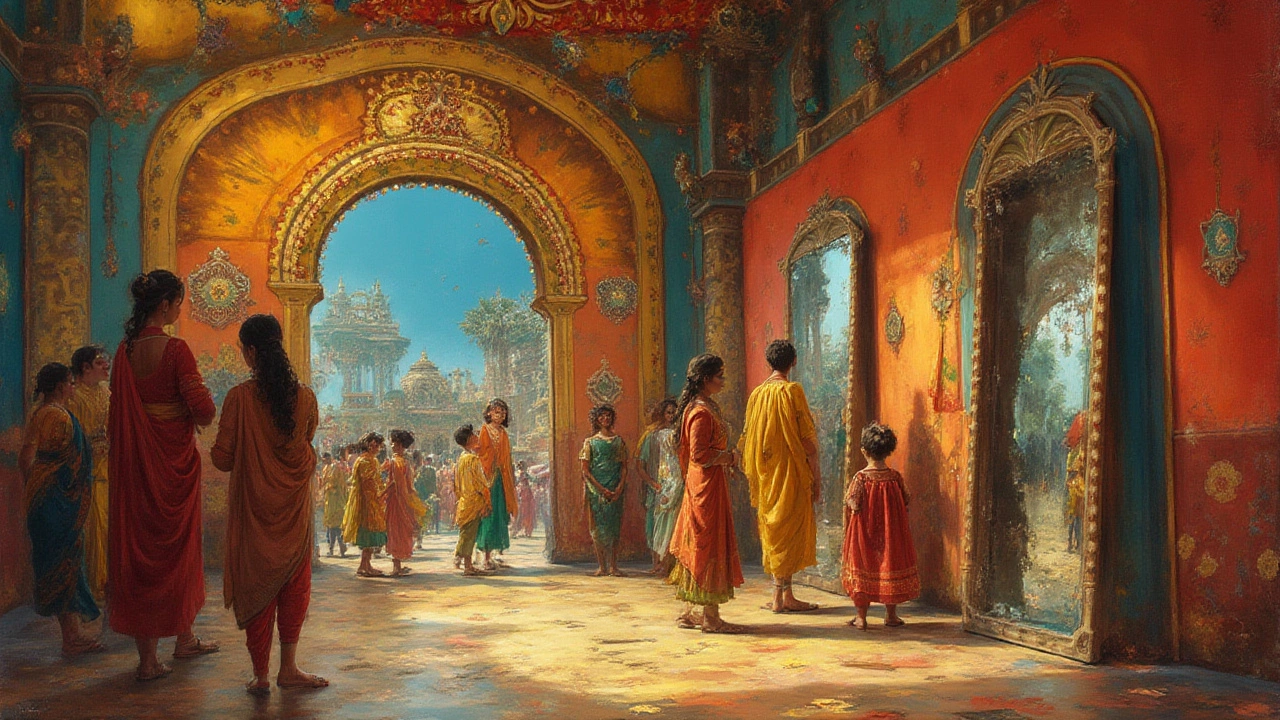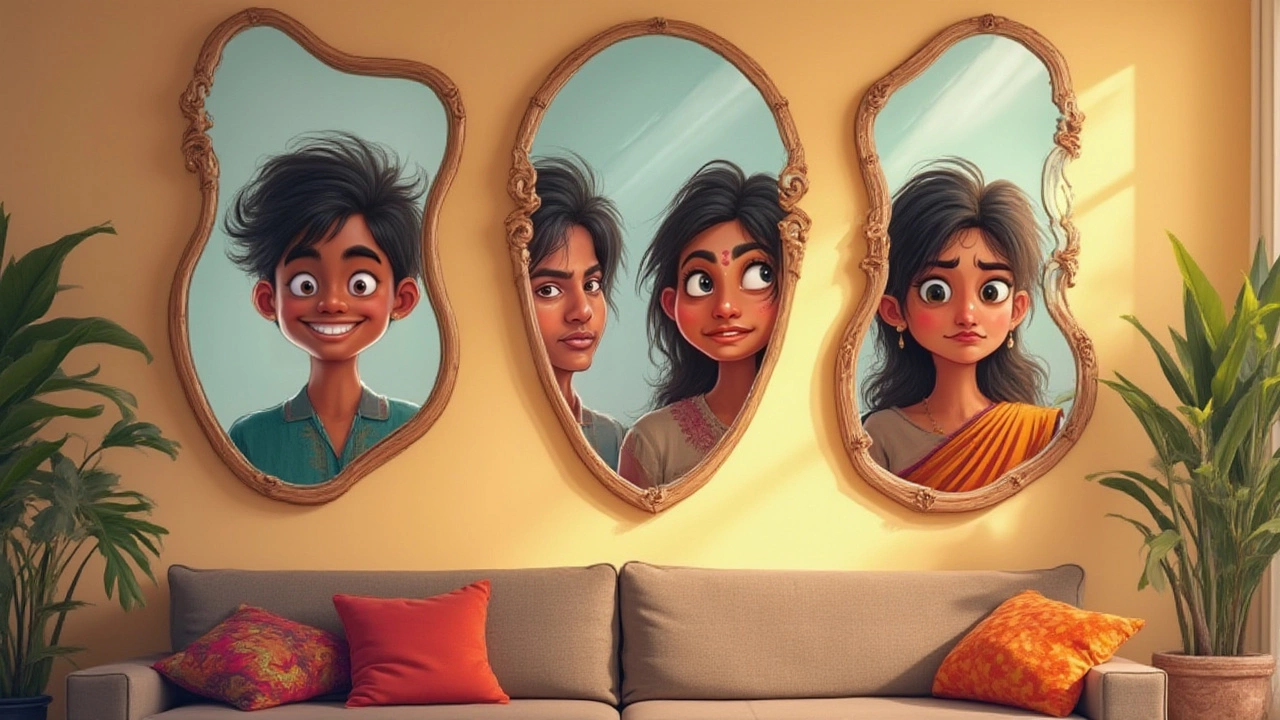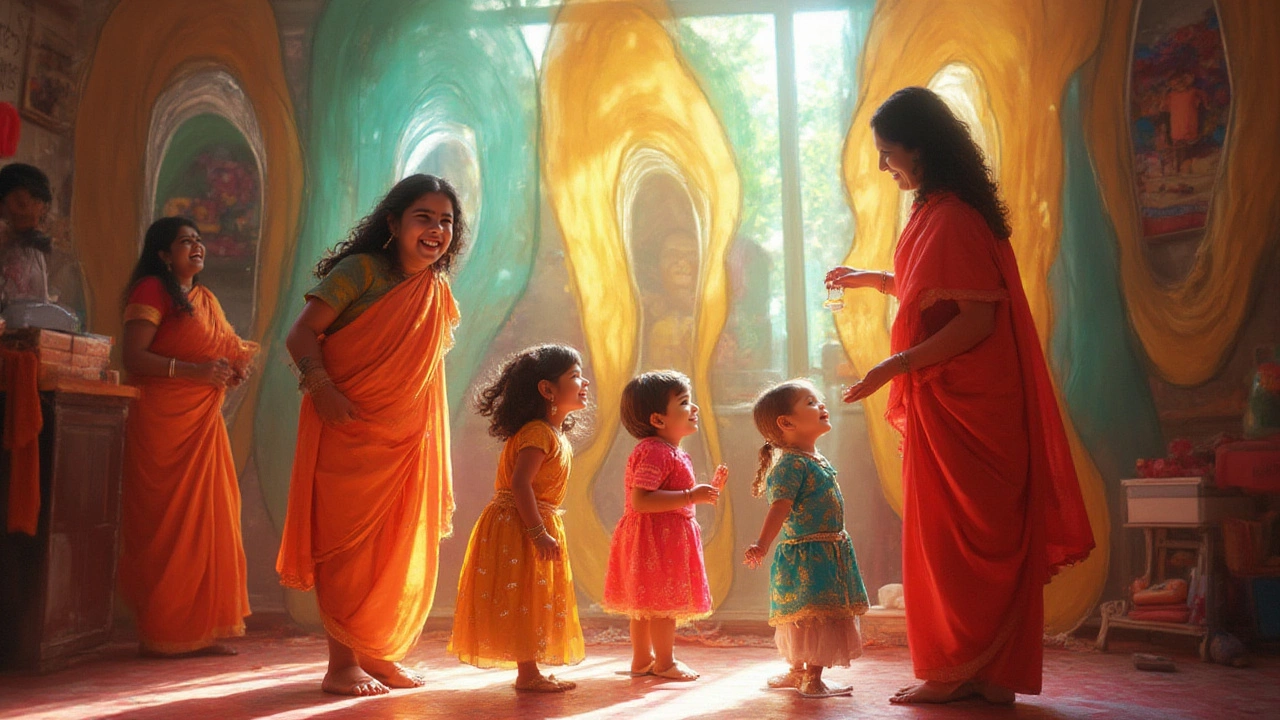Ever stared at your reflection only to see legs like stilts or a squishy, pancake-shaped head? There’s something deeply weird but undeniably hilarious about a distorted mirror. Not just for carnivals, those warped mirrors have a name and a story way juicier than most people realize—plus, their science is surprisingly cool.
The Real Name: What Are Crazy Mirrors Officially Called?
Let’s cut right to the chase. “Crazy mirrors” might be the phrase everyone tosses around, but technically, they’re called funhouse mirrors. Some folks also call them carnival mirrors, trick mirrors, or distortion mirrors—same playful concept, different labels. You’ve probably seen these eccentric reflective surfaces hanging out in funhouses at theme parks, at traveling fairs, or even in some quirky shopping malls. If you look up ‘anamorphic mirrors,’ you’ll hit the more technical side, but most people just stick with funhouse mirror when they’re chatting.
Funhouse mirrors actually date back to the early 20th century. Inventors and showmen started using warped sheets of steel coated with shiny nickel or aluminum to bring laughter and shock to bored fairgoers. The concept got so popular that by the 1930s, almost every traveling carnival boasted its own room of wavy glass. The effect? Total confusion mixed with delight, and it hasn’t really changed. Modern versions often use lightweight acrylic for easier transport and installation, but some collectors still chase those classic, all-metal beauties.
The neat part: these aren’t just wobbly sheets leaning against the wall. Each mirror is carefully crafted using convex, concave, or a wobbly blend of curves. A convex bulge makes you look shorter and wider (think cartoon sumo wrestler), while a concave dip will have you stretching sky-high with toothpick limbs. Some mirrors combine multiple curves for pure chaos. The result is that “what did I just see?” moment that made these mirrors famous.
How Funhouse Mirrors Create Those Wild Illusions
If you’ve ever wondered why you look like a completely different person in a funhouse mirror, you’re not alone. It’s all about geometry and the way light bounces. Regular mirrors have a flat surface, which reflects light straight back at you, creating an accurate reflection—reversed, sure, but undistorted. In contrast, funhouse mirrors use curved surfaces. Here’s a peek at the science:
- Convex mirrors (curved outward): Spread light rays out, making you look shorter and wider. It’s why you end up with broad shoulders and a compact torso.
- Concave mirrors (curved inward): Focus light rays, stretching your reflection. You might look like a bean pole or a giant, depending on how sharp the curve is.
- Twisting or compound mirrors: Use a cocktail of both convex and concave curves, sometimes along more than one axis. Get ready for total visual chaos: Split heads, squashed hips, double knees—the works.
But there’s more going on. Your eyes and brain try to ‘fix’ what they see, and that mental struggle is part of why these mirrors are so funny. You know what you should look like, but your brain can’t reconcile the image with past experience. It triggers that strange, giggly discomfort (and lots of Instagram-worthy selfies).
Mirrors with extra-large curve radii (gentle bends) create subtle effects, while sharper curves produce more dramatic warps. Some carnival mirror rooms arrange these mirrors side-by-side or back-to-back, creating a funhouse maze that’s both wacky and disorienting.
This playful trickery isn’t just some accident, either. Designers use precise math: radius of curvature (the size of the curve), surface smoothness (to avoid blurry reflections), and mirror height/width ratios all play into what you’ll see. Want to experiment at home? Try gently flexing a plastic mirror (the kind you find in toy stores or gyms)—just stretch a little, stand back, and enjoy a taste of the carnival without leaving the living room.

Beyond Carnivals: Where Else Are Crazy Mirrors Used?
It’s easy to think of funhouse mirrors as just party props or fairground attractions, but they pop up in some seriously creative spots. Here are a few surprising uses:
- Kids’ museums and science centers: Interactive exhibits use funhouse mirrors to teach about optics and physics. They show how light can bend and change what we see, making science hands-on and sticky-brain memorable.
- Retail stores: Some trendy clothing shops add distorted mirrors to dressing rooms as a cheeky gimmick. The idea: put shoppers at ease, make them laugh, and break the tension around body image—at least for a few minutes.
- Art installations: Artists worldwide love playing with distortion and reflections. Check out Yayoi Kusama’s Infinity Mirror Rooms or Anish Kapoor’s giant outdoor curved mirrors. While not all are strictly ‘crazy’ mirrors, they twist reality in a way that’s just as hypnotic.
- Photography studios: Funhouse mirrors can be used for creative portraits or optical illusion shots. Photographers sometimes hunt down vintage mirrors for unique effects.
- Home décor: Some bold homeowners install a distortion mirror in game rooms or near home bars, turning it into an instant conversation starter. Small, wavy acrylic mirrors make playful wall accents and keep party talk flowing.
Even the serious side of mirrors sees some twist. Scientists have adapted similar techniques for everything from telescopes that look deep into space to medical imaging tech—proof that what starts as a joke at the fair sometimes turns into big-time discoveries.
Here’s a quick look at where you might find them, plus the kinds of distortions you get:
| Location | Type of Crazy Mirror | Effect on Reflection |
|---|---|---|
| Carnival Funhouse | Combination mirrors | Multiple warps, comic mayhem |
| Museum Exhibit | Concave or convex | Single, notable distortion |
| Art Galleries | Compound/kinetic mirrors | Interactive illusions |
| Retail Shops | Slightly wavy mirrors | Gentle, humorous effect |
| Modern Homes | Acrylic distortion mirrors | Soft, decorative warping |
Buying or Making Your Own Funhouse Mirror: Tips and Tricks
If you want to bring some of that funhouse magic into your own space, good news—DIY options are totally doable, and you can also buy ready-made crazy mirrors from specialty shops online. Here’s what to consider:
- Materials matter: Traditional carnival mirrors were made from curved sheets of polished metal, heavy and hard to shape. Modern versions use acrylic or polycarbonate—lighter, safer (especially if kids or pets are around), and cheaper. Bonus: acrylic is easy to bend if you want to try a home project.
- Getting the right curve: For a DIY mirror, try gently heating an acrylic sheet (use a heat gun or warm oven—carefully!) and then molding it over a rounded object, like a large pipe or curved furniture. Let it cool to lock in the new shape. Even small curves can make a big difference.
- Mounting: For maximum fun, hang your mirror vertically with plenty of space around it, so people can walk past and catch their own distorted reflections. If possible, set up two facing each other for wild infinity effects. Heavy-duty double-sided tape works for lighter materials.
- Safety first: Acrylic mirrors are far less likely to break than glass, but they can scratch. Keep cleaning simple: gentle cloth, a splash of mild soap, and avoid abrasive cleaners.
- Buying ready-made: Search for “funhouse mirror,” “distortion mirror,” or “carnival mirror” online. Sizes range from handheld trinkets to towering statement pieces. Some companies even offer custom curves, so you can pick the precise effect you want. Just check the surface isn’t too foggy or wiggly—crisp reflections make all the difference.
A word on price: Small acrylic mirrors start at about $30 (AUD) but can quickly rise to several hundred dollars for larger, professionally-made designs. Vintage metal mirrors are collectible and rare, so expect to pay a premium if you track one down at a flea market or auction.
Not ready to commit? Plenty of party hire companies rent out full-size funhouse mirrors for events, so you can dip your toe in before buying. If you’re setting one up outdoors, make sure to shield it from harsh sunlight—direct rays can actually bounce and start a fire on grass (not the fun ending you were hoping for).

The Science and Psychology Behind Our Love for Crazy Mirrors
Something about a funhouse mirror just grabs us, young or old. There’s a heap of science behind why we find distorted reflections so interesting, and a lot more going on than just good laughs. Our brains are experts at recognizing faces and bodies—so when those familiar shapes suddenly warp, it sparks intense curiosity (and usually, a round of giggles).
Psychologists call this effect “cognitive dissonance.” Your mind expects to see one thing, but the reflection throws it off balance. This clashing information creates a weird sense of surprise, which usually triggers a smile or a laugh. Kids respond especially strongly—research from the Australian Institute of Family Studies found that children aged 4-8 showed higher levels of social play and laughter in spaces with reflective, distorted surfaces compared to rooms without mirrors.
Funhouse mirrors also sneakily teach us about how perception is flexible. In science lessons, mirrors like these show how the same object can be stretched, squashed, or doubled up based on simple physics principles. It’s all about how light interacts with surfaces—a concept that pops up not just in funhouse mirrors, but in telescopes, microscopes, even car side mirrors (those are convex too, by the way).
The popularity of crazy mirrors has also made its mark on pop culture. In Australia, you’ll spot them at Perth Royal Show, the Sydney Luna Park, or retro arcades where they’ve survived decades of sticky fingers and camera flashes. Social media loves them too—#funhousemirror has over 140,000 posts on Instagram, packed with stretchy faces and hilarious fashion fails. There’s even a mini-craze for tiny, portable funhouse mirrors people use at festivals or as party favors.
Behind the curtain, designers use advanced computer modeling to create today’s most effective funhouse mirrors. By analyzing the “ideal curve” that delivers maximum surprise for the human eye (but isn’t too confusing), they’ve managed to balance chaos and fun. Data from the Museum of Applied Arts and Sciences in Sydney suggests that funhouse mirrors increase the average visitor’s time spent in an exhibit by 35%. That’s proof that, deep down, we just can’t resist a twist on reality—especially when there’s a mirror involved.
If you ever spot one at an event or venue, don’t skip it. There’s something timeless about standing in front of a warped mirror and seeing your world—just for a moment—through a completely twisted lens.
